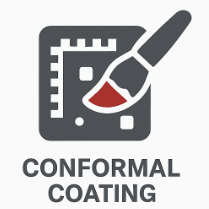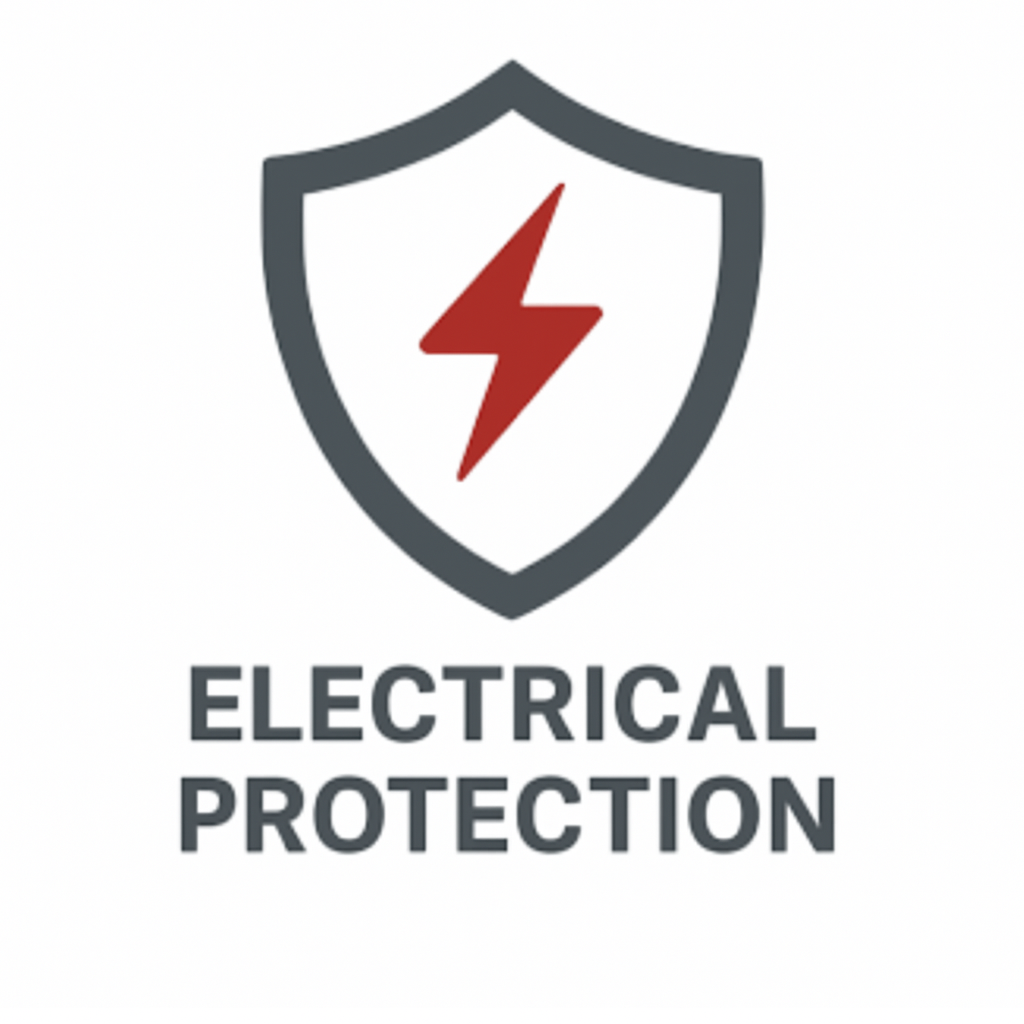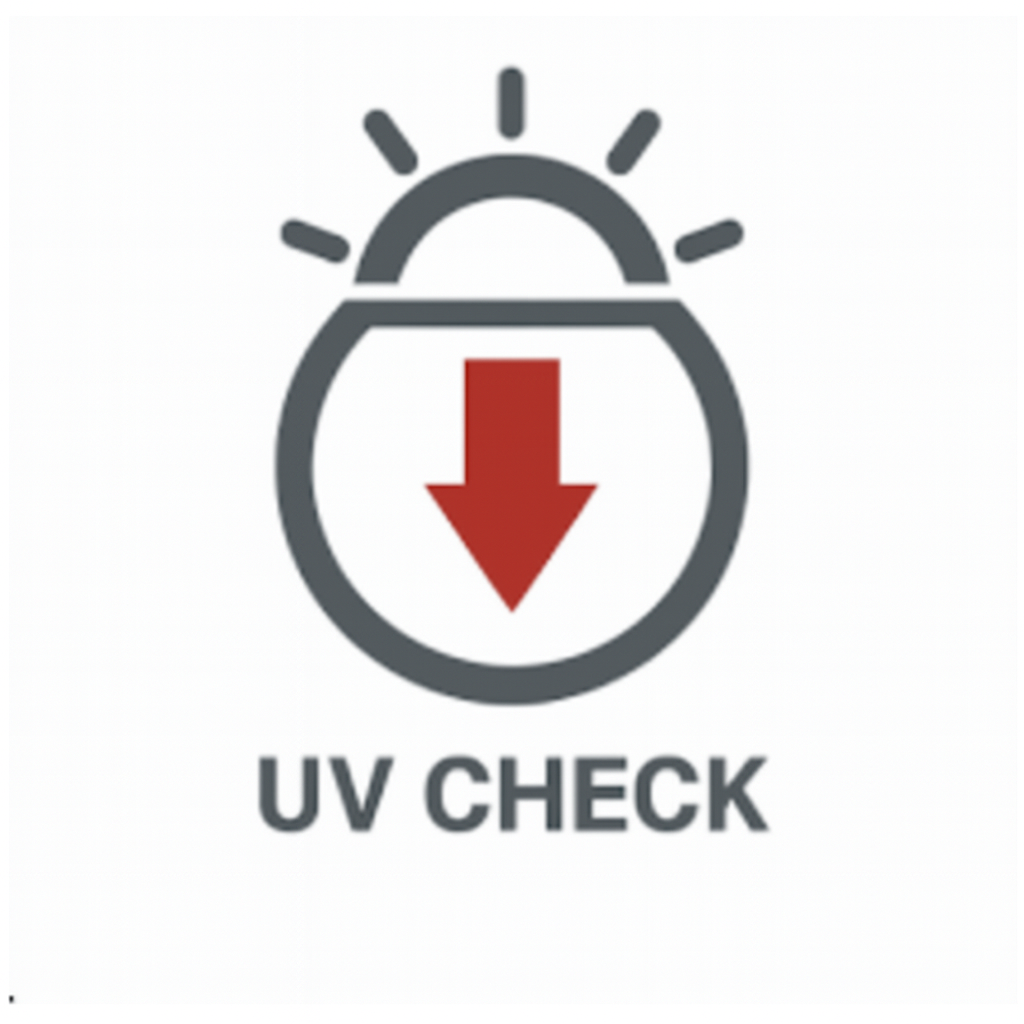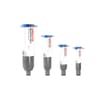Humiseal 1B58LU-60 | Toluene-Free Synthetic Rubber Conformal Coating
- Toluene-free
- Improved thermal stability
- Low moisture vapor permeability
Product Description
HumiSeal 1B58LU-60 is a fast-drying, single-component, urethane conformal coating that provides excellent moisture and environmental protection for printed circuit assemblies. 1B58LU-60 contains a UV tracer for inspection and is compliant with the RoHS Directive 2002/95/EC.
Product Key Features
- Fast-drying — Reduces production time.
- Single-component — Ready-to-use, no mixing required.
- Excellent flexibility — Prevents cracking under thermal cycling stress.
- Fluoresces under UV light for easy inspection.
- Excellent moisture resistance — Protects against humidity and environmental contaminants.
Applications
- This coating is suitable for a wide range of applications where a tough, protective barrier is needed. Its primary use is on printed circuit assemblies to safeguard them from harsh operating conditions.
Technical Specifications
| General Properties | |||||
| Density (g) | 0.8 g/cm3 | ||||
| Solids | 14.5 % | ||||
| Physical Properties | |||||
| Viscosity Viscosity Viscosity is a measurement of a fluid’s resistance to flow. Viscosity is commonly measured in centiPoise (cP). One cP is defined as the viscosity of water and all other viscosities are derived from this base. MPa is another common unit with a 1:1 conversion to cP. A product like honey would have a much higher viscosity -around 10,000 cPs- compared to water. As a result, honey would flow much slower out of a tipped glass than water would. The viscosity of a material can be decreased with an increase in temperature in order to better suit an application | 60 mPa.s | ||||
| Electrical Properties | |||||
| |||||
| Dielectric Strength Dielectric Strength Dielectric strength is measured in kV per mm and is calculated by the Breakdown voltage divided by the thickness of the tested material. Those two properties go hand in hand and while Breakdown voltage is always thickness dependent, dielectric strength is a general material property. As an example, the dielectric strength of Polyimide is 236 kV/mm. If we place 1mm of Polyimide between two electrodes, it will act as an insulator until the voltage between the electrodes reaches 236 kV. At this point it will start acting as a good conductor, causing sparks, potential punctures and current flow. | 138 kV/mm | ||||
| |||||
| Mechanical Properties | |||||
| |||||
| Thermal Properties | |||||
| Glass Transition Temperature (Tg) Glass Transition Temperature (Tg) The glass transition temperature for organic adhesives is a temperature region where the polymers change from glassy and brittle to soft and rubbery. Increasing the temperature further continues the softening process as the viscosity drops too. Temperatures between the glass transition temperature and below the decomposition point of the adhesive are the best region for bonding. The glass-transition temperature Tg of a material characterizes the range of temperatures over which this glass transition occurs. | -49.6 °C | ||||
| Operating Temperature | -65 - 125 °C | ||||
| Curing Conditions | |||||
| |||||
Additional Information
Frequently Asked Questions About HumiSeal® 1B58LU-60
What are typical applications for HumiSeal® 1B58LU-60?
HumiSeal® 1B58LU-60 is a fast-drying, single-component synthetic rubber conformal coating. Due to its unique polymer base, it provides an exceptionally low moisture vapor permeability and improved thermal stability, making it an excellent choice for protecting printed circuit board assemblies (PCBs) in high-humidity and demanding environments. Its flexibility and low stress on components make it a reliable choice for a variety of industries, including:
- Automotive electronics (e.g., in-cabin and under-the-hood)
- Industrial control systems
- Military electronics
- Renewable energy systems
This coating is particularly well-suited for applications that require superior protection against moisture and environmental stressors, where a simple and flexible coating system is preferred.
Why choose HumiSeal® 1B58LU-60 over other conformal coatings?
HumiSeal® 1B58LU-60 is a high-performance synthetic rubber formulation that dries quickly at ambient temperature. It stands out due to its extremely low moisture vapor permeability, improved thermal stability, superior flexibility, and low stress on components. Unlike some coatings, it includes a UV fluorescent tracer for easy inspection, and it is easily repaired. It leverages an environmentally friendly solvent blend, making it a more sustainable choice. The coating's viscosity is optimized for spray, brush, or dip application and can be thinned with HumiSeal Thinner 903 or 905. It meets the requirements of the RoHS Directive 2002/95/EC and 2011/65/EC (and 2015/863/EU).
What is the shelf life of HumiSeal® 1B58LU-60?
HumiSeal® 1B58LU-60 has a shelf life of 18 months from the date of manufacture when stored at room temperature in a tightly closed container, away from excessive heat or cold. As a fast-drying solvent-based material, it is crucial to protect the product from ambient air to prevent premature polymerization and solvent evaporation. Therefore, any open or partial containers should be tightly sealed after use.
What happens to HumiSeal® 1B58LU-60 after its shelf life?
After the shelf life, the material's viscosity may increase, and its application characteristics may degrade. This can lead to improper application, uneven coating, and a reduction in the protective performance of the cured film. The use of expired material is not recommended as it may compromise the quality and reliability of the coating. Due to its solvent-based nature, proper storage is critical to maintaining product integrity.
How does HumiSeal® 1B58LU-60 cure, and why do drying times vary?
HumiSeal® 1B58LU-60 is a single-component, fast-drying coating. It is dry to the touch in approximately 10 minutes and will be ready for handling. A full cure is achieved after 24 hours at room temperature (25°C) or within 30 minutes at an elevated temperature of 76°C. The time required to reach optimum protective properties is approximately 7 days. Drying times can vary based on ambient conditions; higher temperature and lower humidity will accelerate the drying process.
What is the recommended thickness for HumiSeal® 1B58LU-60?
The recommended coating thickness for HumiSeal® 1B58LU-60 is 25 to 75 microns (1-3 mils). This thickness range ensures optimal protective performance while maintaining flexibility and electrical properties. The final thickness can be adjusted based on the application method and specific project requirements.
What are the differences between application methods for HumiSeal® 1B58LU-60?
HumiSeal® 1B58LU-60 can be applied by dipping, spraying, or brushing. Dipping is often used for high-volume, automated processes, providing uniform coverage for complex geometries. Spraying, using conventional spray equipment, is ideal for selective application and achieving a consistent film. Brushing is suitable for rework or small-scale applications, offering precise control in localized areas. For all methods, ensuring adequate ventilation is crucial to prevent the build-up of flammable solvent vapors. For dipping or spraying, it is recommended to thin the material with HumiSeal Thinner 903 or 905.
What is the maximum operating temperature for HumiSeal® 1B58LU-60?
HumiSeal® B58LU-60 has a continuous use operating temperature range of –65°C to +125°C, providing consistent protection across a wide range of thermal conditions. It is capable of withstanding thermal shock within this range, as demonstrated by its compliance with MIL-I-46058C testing.
What safety precautions should I take when using HumiSeal® 1B58LU-60?
HumiSeal® 1B58LU-60 contains flammable solvents, so it should be used in well-ventilated areas and kept away from open flames or sparks. Prevent skin and eye contact by wearing appropriate personal protective equipment, including safety glasses and solvent-resistant gloves. Avoid inhalation of vapors and spray mist. Always consult the product's Safety Data Sheet (SDS) for detailed handling, storage, and disposal information.
How can I ensure proper application of HumiSeal® 1B58LU-60?
HumiSeal® 1B58LU-60 contains a UV fluorescent tracer, which makes it easy to inspect under a blacklight. This allows for quick and efficient quality control to ensure proper coverage and uniformity. Visual inspection under UV light is the primary method for ensuring proper application and can reveal areas that were missed or have an inconsistent thickness.
How does HumiSeal® 1B58LU-60 perform in harsh environments?
HumiSeal® 1B58LU-60 provides excellent protection against moisture, humidity, and chemical exposure. The cured synthetic rubber film is tough and flexible, ensuring long-term integrity against environmental stressors. Due to its extremely low moisture vapor permeability and **improved thermal stability**, this coating is an ideal solution for applications where PCBs are exposed to high humidity and corrosive agents.
Learn More About HumiSeal® 1B58LU-60
HumiSeal® 1B58LU-60 is a high-performance, single-component, synthetic rubber conformal coating. Designed for superior protection, this coating offers a fast-drying yet effective solution for safeguarding electronic assemblies in demanding environments. It provides a reliable defense against moisture, chemicals, and temperature extremes, making it an industry staple for protecting PCBs in sectors like automotive, military, and industrial automation.
Key Features at a Glance
- ✔ Fast-drying, single-component system
- ✔ Extremely low moisture vapor permeability
- ✔ Improved thermal stability
- ✔ Excellent flexibility and low stress on components
- ✔ Wide operating temperature range (-65°C to +125°C)
- ✔ Contains a UV fluorescent tracer for easy inspection

.png)
Fast Drying with an Environmental Focus 🌱
HumiSeal® 1B58LU-60 offers a fast and reliable drying system that doesn't require any special curing equipment. It is ready to handle in just 10 minutes. The coating contains a methylcyclohexane solvent, which is a more environmentally friendly alternative to traditional solvents, helping manufacturers reduce their environmental footprint while maintaining high performance.
Drying Parameters:
- Time to Handle: 10 minutes
- Full Cure: 24 hours at room temperature or 30 minutes at 76°C
This fast-drying mechanism helps streamline the production process and is ideal for high-volume manufacturing environments.
Application and Compatibility
HumiSeal® 1B58LU-60 is a versatile coating formulated for various application methods, making it compatible with a wide range of manufacturing environments.
Compatible With:
- ✔ Spray, dip, or brush application methods
- ✔ High-reliability applications requiring excellent moisture resistance
- ✔ "No-clean" flux residues (users should confirm compatibility)
- ✔ Lead-free and RoHS-compliant manufacturing environments
Additionally, the coating is reworkable using thermal methods or chemical strippers, making it a practical choice for designs that may require servicing or component repair.
High-Performance Electrical and Physical Protection 🛡️
HumiSeal® 1B58LU-60 delivers outstanding electrical insulation with a dielectric withstand voltage >1,500 volts and insulation resistance >2.0 × 10¹⁴ ohms. Its synthetic rubber chemistry provides excellent chemical resistance, flexibility, and abrasion resistance, ensuring long-term durability and protection against moisture, contaminants, and mechanical stress.
Inspection and Quality Control 🔍
HumiSeal® 1B58LU-60 contains a UV fluorescent tracer, allowing for quick and easy inspection under UV light. This feature enables manufacturers to rapidly confirm uniform coverage and identify any areas that may have been missed. The fluorescent glow provides a clear visual signal, simplifying the quality assurance process and ensuring consistent application.


Repairable and Reworkable 🛠️
Although HumiSeal® 1B58LU-60 forms a robust, durable film, it is still reworkable. If component replacement or repair is needed, the cured coating can be selectively removed using thermal displacement (e.g., a soldering iron), mechanical abrasion, or a chemical stripper. This feature makes 1B58LU-60 suitable for applications that require field serviceability or prototype modification.
Reliable Across Environments 🌍
With a continuous operating temperature range of –65°C to +125°C, coupled with excellent moisture and chemical resistance, 1B58LU-60 ensures consistent performance across varied environmental conditions. Its robust synthetic rubber film is particularly well-suited for critical systems exposed to humidity, corrosive agents, and significant temperature cycling.
Compliance You Can Trust ✅
HumiSeal® 1B58LU-60 meets stringent industry standards, ensuring reliability and regulatory adherence for OEMs and contract manufacturers:
- MIL-I-46058C Qualified
- IPC-CC-830 Compliant
- RoHS Directive 2002/95/EC and 2011/65/EC (and 2015/863/EU) Compliant





